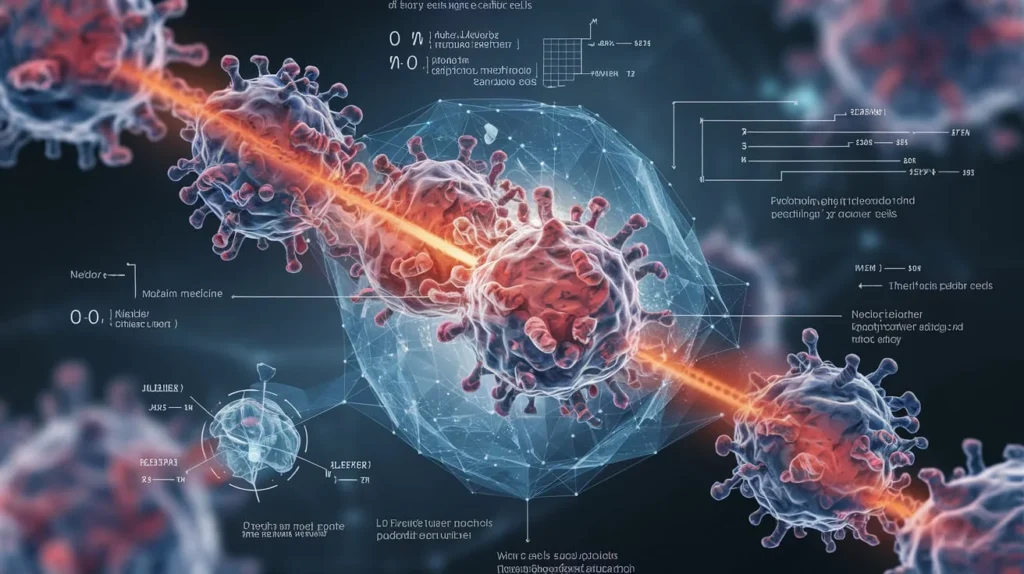Cancer research technology is revolutionizing how doctors detect, treat, and prevent cancer. Advanced tools now allow researchers to study cancer at the cellular level with unmatched precision. These technologies improve early detection, therapy development, and personalized treatment.
The field has grown significantly in the last decade. Hospitals and labs rely on cutting-edge equipment to accelerate the fight against cancer. cancer treatment innovations also reduce trial-and-error in treatments, improving survival rates.
Modern innovations like AI, genomic profiling, nanotechnology, and advanced imaging provide researchers with insights into cancer behavior. This helps in designing therapies that are more targeted and effective.
Advanced Imaging in cancer treatment innovations
Advanced imaging is a crucial part of cancer detection methods, providing detailed insights into tumor growth and progression. Techniques such as MRI, PET, CT scans, and ultrasound enable early detection, continuous monitoring, and precise treatment planning. These technologies allow researchers and doctors to visualize tumors in real-time, improving diagnosis accuracy and enhancing the effectiveness of cancer therapies.
Key Imaging Techniques:
- MRI shows soft tissue changes and tumor boundaries.
- PET scans detect the metabolic activity of aggressive cancer cells.
- CT scans provide 3D views for accurate treatment planning.
- Ultrasound assists in biopsies and non-invasive diagnosis.
These tools allow researchers to visualize cancer in real-time, making treatments faster and more precise.
Genomic Profiling: Understanding Cancer at the DNA Level

Genomic profiling is a vital tool in cancer diagnostics technology that examines the DNA of cancer patients to identify mutations responsible for tumor growth. By analyzing these genetic changes, scientists can understand how cancer develops and progresses in each individual. This insight allows researchers and doctors to design therapies that are specifically tailored to a patient’s unique genetic makeup, improving treatment effectiveness.
Next-generation sequencing has revolutionized genomic profiling by making the process faster, more affordable, and highly accurate. This technology helps identify gene mutations that drive cancer, predicts how patients will respond to specific treatments, and enables early detection for those at high risk. As a result, genomic profiling supports precision medicine, offering more personalized, targeted, and effective cancer care.
Artificial Intelligence in cancer diagnostics technology
Artificial intelligence (AI) is revolutionizing cancer diagnostics technology by analyzing vast amounts of data to uncover patterns that are often invisible to humans. It supports early and accurate diagnosis, predicts disease progression, accelerates drug development, and helps design personalized treatment plans. By automating repetitive tasks and reducing human error, AI significantly improves research efficiency and enables doctors to make data-driven decisions for better patient outcomes.
Key Applications of AI:
- Detects tumors accurately from imaging data.
- Predicts patient outcomes using machine learning.
- Speeds up new drug discovery through simulations.
- Helps design personalized treatment plans.
Nanotechnology: Targeted Cancer Treatments
Nanotechnology is a breakthrough in cancer diagnostics technology that uses microscopic particles to deliver drugs directly to cancer cells. This precise targeting reduces damage to healthy tissues and minimizes side effects, making treatments safer for patients. By focusing therapy specifically on tumors, nanotechnology increases the effectiveness of cancer drugs and enhances overall treatment outcomes.
In addition to drug delivery, nanotechnology improves diagnostic imaging, allowing doctors to see tumors more clearly and plan treatments more accurately. These nanoparticles can also increase drug absorption and bioavailability, ensuring that medications work efficiently at lower doses. Overall, nanotechnology is transforming cancer care by making treatments more targeted, precise, and effective.
Immunotherapy

Immunotherapy is a revolutionary approach in cancer research using genomic sequencing in cancer that trains the body’s immune system to recognize and attack cancer cells. This method enhances the immune response, helping the body fight cancer more effectively. Immunotherapy can also be combined with traditional treatments like chemotherapy or radiation to improve overall outcomes and provide a more comprehensive approach to cancer care.
In addition to boosting the immune system, immunotherapy reduces the risk of cancer recurrence by targeting residual cancer cells that may remain after treatment. It offers personalized therapy options tailored to each patient’s condition, resulting in longer survival rates and fewer side effects. This innovation is reshaping cancer treatment and providing new hope to patients worldwide.
CRISPR and Gene Editing in Cancer Research
CRISPR is a powerful gene-editing tool in cancer research technology that allows scientists to modify genes responsible for tumor growth. By precisely targeting cancer-causing genes, CRISPR can help develop preventive therapies for high-risk individuals and accelerate the creation of experimental models for research. This technology also supports personalized treatment approaches, offering the potential to prevent or even cure cancer before it spreads.
Key Applications of CRISPR:
- Targets specific genes driving tumor growth.
- Offers potential for preventive therapy in high-risk individuals.
- Speeds up the creation of experimental models for research.
- Supports personalized treatment approaches.
Digital Pathology and AI Integration
Digital pathology is an advanced aspect of cancer research technology that uses high-resolution scans of tissue samples to improve diagnosis. When combined with artificial intelligence, it enables faster and more accurate analysis, helping doctors detect cancer patterns that are often invisible to the human eye. This technology enhances the precision of cancer diagnosis and allows researchers to study tissue samples in greater detail.
In addition to improving diagnostic accuracy, digital pathology supports research by digitizing large datasets, making it easier to share and analyze information across labs. It also reduces manual errors in laboratory work, improving overall efficiency and reliability. The integration of AI with digital pathology is transforming cancer research, making it faster, more precise, and more effective.
Wearable Technology and Patient Monitoring

Wearable technology is an emerging tool in cancer research that monitors patients’ vital signs and responses during treatment. These devices provide real-time feedback to doctors, helping assess treatment efficacy and detect potential complications early. By empowering both patients and healthcare providers with continuous data, wearables improve decision-making and enhance overall treatment outcomes.
Key Benefits:
- Monitors heart rate, oxygen levels, and physical activity.
- Provides real-time feedback to doctors.
- Helps assess treatment efficacy.
- Supports early detection of complications.
Conclusion
Cancer research technology has transformed the way doctors detect, treat, and manage cancer. Innovations like AI, genomic profiling, advanced imaging, and nanotechnology have made diagnosis more accurate and treatments more effective. Patients now have access to therapies that are tailored to their specific needs, improving survival rates and quality of life.
The integration of tools such as immunotherapy, CRISPR, digital pathology, and wearable devices continues to expand the possibilities in cancer care. These technologies not only help in personalized treatment but also enable early detection, reduce side effects, and streamline research. This combination of innovation and precision is making cancer management more efficient and patient-friendly.
As research continues, the future of cancer treatment looks promising. Continuous investment in technology, collaboration among researchers, and ongoing innovation will ensure that cancer can be detected earlier, treated more effectively, and potentially prevented. It is paving the way toward a future where cancer is more manageable and survivable for millions worldwide.

